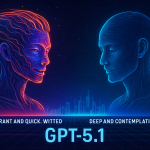Hold onto your hats, folks, because the AI rollercoaster just took another loop-de-loop. President Trump, now well into his second term (yes, you read that right, *second*), has thrown down the gauntlet, demanding a unified federal standard for regulating artificial intelligence. Forget the Wild West, we’re talking about the Wild *Westworld*, where the stakes are higher and the robots are smarter.
The President, never one to mince words, took to social media (where else?) on November 18th to decry the potential for a “patchwork” of 50 different state-level AI policies. Imagine trying to navigate that regulatory maze. It’d be like trying to assemble IKEA furniture with instructions written in Klingon. His core argument? Overregulation will strangle US AI development, handing a massive competitive advantage to China. The specter of technological dominance looms large, as always.
This isn’t just a passing thought bubble from the Oval Office. It’s the latest salvo in a much larger battle over the future of AI, its governance, and its impact on everything from our jobs to our national security. Remember back in the early 2020s when everyone was debating whether AI would steal our jobs or usher in a new era of prosperity? Well, the debate hasn’t gone away, it’s just gotten a whole lot more complicated.
Trump’s push for a federal standard is a direct result of his administration’s AI Action Plan, launched shortly after his (re)inauguration in January 2025. The plan, predictably, aims to make the United States the undisputed king of the AI hill, while simultaneously clearing away any regulatory roadblocks that might slow us down. Think of it as the AI equivalent of “Make America Great Again,” but with algorithms and neural networks instead of tariffs and trade deals.
But what does a “unified federal standard” actually *mean*? That’s the million-dollar question, isn’t it? The President’s social media post was frustratingly light on specifics. He simply urged lawmakers to shoehorn the standard into the upcoming National Defense Authorization Act (NDAA) or pass it as a standalone bill. “Put it in the NDAA, or pass a separate Bill, and nobody will ever be able to compete with America,” he declared, with his trademark flair for hyperbole. It’s a bold claim, bordering on something straight out of a superhero movie. You can almost picture him as Iron Man, but instead of nanobots, he’s wielding algorithms.
The lack of detail is both concerning and, frankly, unsurprising. Is this about data privacy? Algorithmic bias? Autonomous weapons systems? The potential applications of AI are so vast and varied that crafting a single regulatory framework to cover them all seems almost impossible. It’s like trying to catch smoke with a butterfly net.
The implications of this move are far-reaching. On the one hand, a unified standard could streamline regulatory processes, reduce bureaucratic red tape, and create a more stable and predictable environment for AI developers and investors. Imagine the frustration of a company trying to launch an AI-powered medical diagnostic tool, only to be faced with a different set of regulations in every state. A federal standard could eliminate that headache and unleash a wave of innovation.
On the other hand, a federal standard could also stifle innovation, particularly if it’s poorly designed or overly restrictive. States, after all, are often seen as laboratories of democracy, experimenting with different policies and approaches. A one-size-fits-all approach might not be the best way to foster a dynamic and competitive AI ecosystem. And let’s not forget the potential for political maneuvering and special interests to influence the drafting of the standard, potentially leading to regulations that favor certain companies or industries over others.
The debate over AI regulation isn’t just about economics and technology; it’s also about ethics and societal values. How do we ensure that AI is used responsibly and ethically? How do we protect individuals from bias and discrimination? How do we address the potential impact of AI on jobs and the workforce? These are complex questions with no easy answers, and they require a broad and inclusive public dialogue. It’s not enough to simply handwave these concerns away with promises of economic growth and technological progress.
And then there’s the China factor. The specter of China’s rapid AI advancements hangs over this entire debate like a dark cloud. The US and China are locked in a technological arms race, and AI is one of the key battlegrounds. The Trump administration clearly believes that a unified federal standard is necessary to maintain America’s competitive edge. But is that the right approach? Some argue that a more decentralized and experimental approach is actually better suited to fostering innovation and staying ahead of the curve. It’s a classic case of “the tortoise and the hare,” but with algorithms instead of animals.
Ultimately, the success of this initiative will depend on the details of the federal standard itself. If it’s well-crafted, flexible, and adaptable, it could help to unlock the full potential of AI while mitigating its risks. But if it’s overly rigid, bureaucratic, or politically motivated, it could end up doing more harm than good. The stakes are high, and the future of AI, and perhaps the future of America’s technological leadership, hangs in the balance. So, buckle up, folks. This is going to be a wild ride.
Discover more from Just Buzz
Subscribe to get the latest posts sent to your email.


